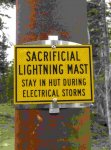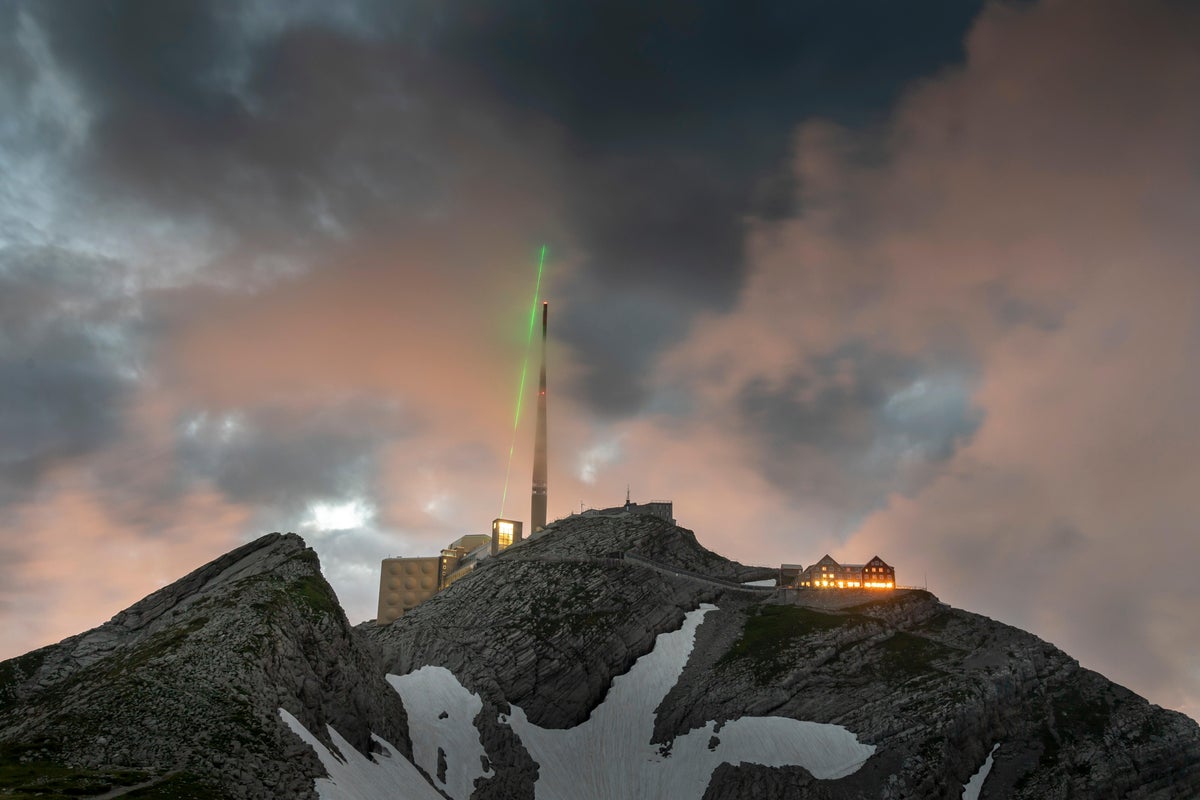"....................Seems like something Ms. C. Frostbite could enlighten us on with a humorous, entertaining and educational story................"
Awww! Sweet--- you guys flatter me too much..... 
My problem is I have a lot of lightning stories- but fortunately for me, no
recent little lightning tales.
This one, below-- its probably one of my most memorable experiences------

I like this photo - I spent a hairy evening in this hut (its actually a cabin perched near the summit of a 13,000+ foot mountain) during what could only be called something out of Modest Mussorgsky's ** "Night on Bald Mountain." We mostly perched on stools, the legs of which were mounted...

forums.radioreference.com
____________________________________________________________
The use of an ionizing laser beam looks like a neat (ie: expensive) way to deal to deal with lightning- though certainly not a phenomenon unknown since -like forever.
For instance, there is an old smelter stack not to far from me that old timers relate regularly drew lightning out of the clear sky.... not because of its height but because of the ionizing mineral laden gases it shot into the air. When the smelter went SK that stopped, though its 360-some feet still make it an awesome target during electrical storms.

I have never experienced this myself, but I have heard tales of lighting coming down chimneys and wood stove flue pipes here in the high Rocky's... needless to say all my stove flues are ground'd thru heavy copper cables,
Lauri
.






